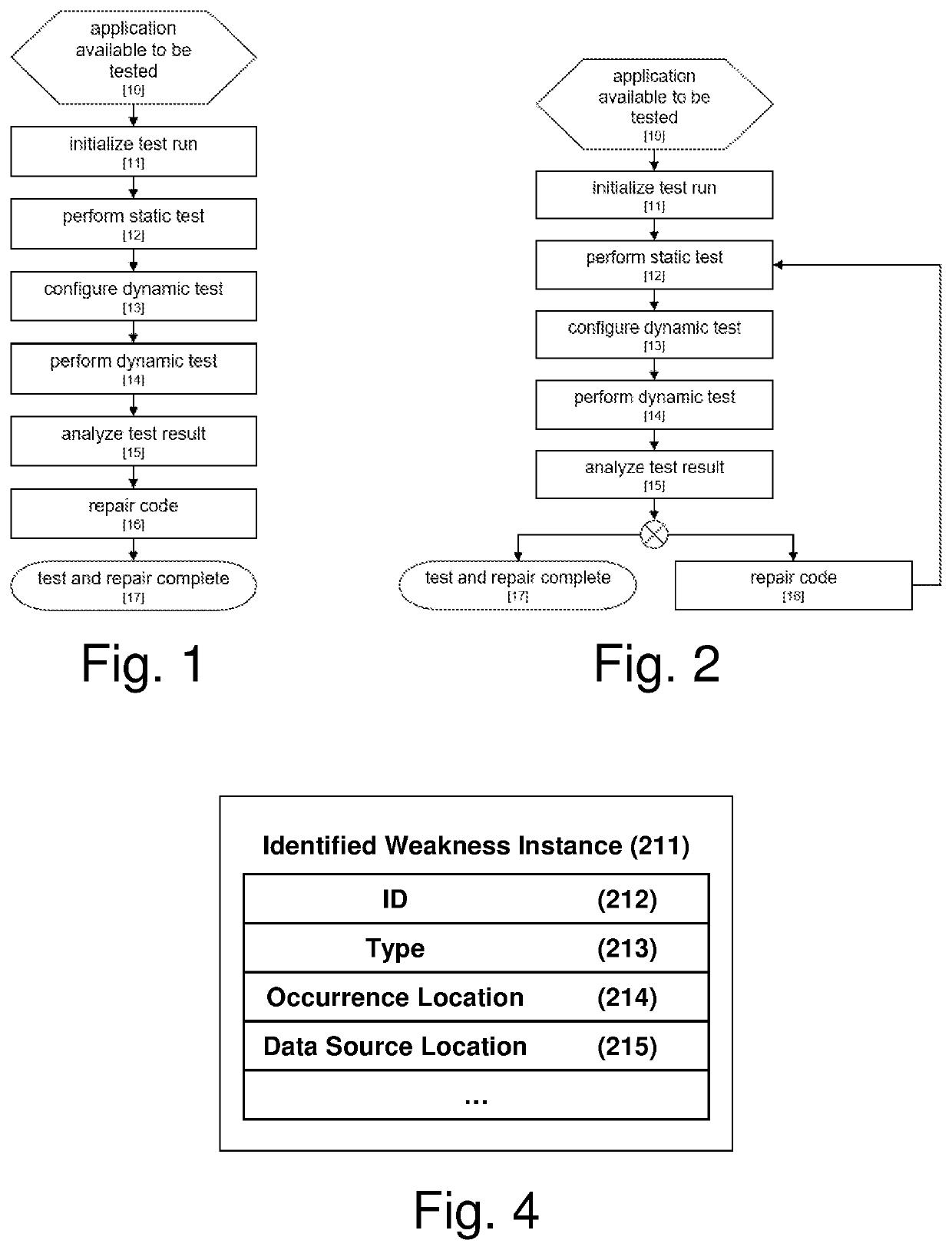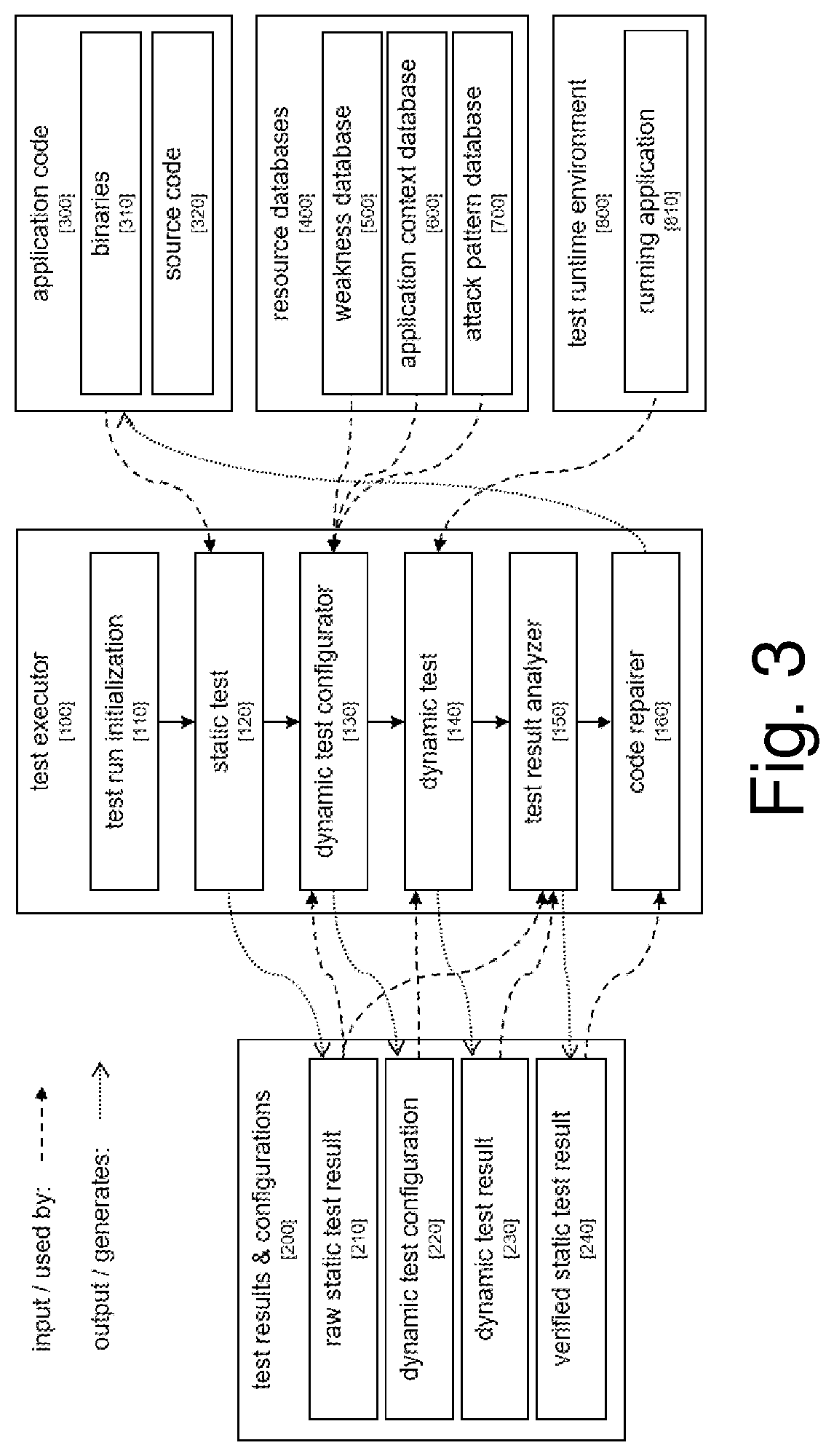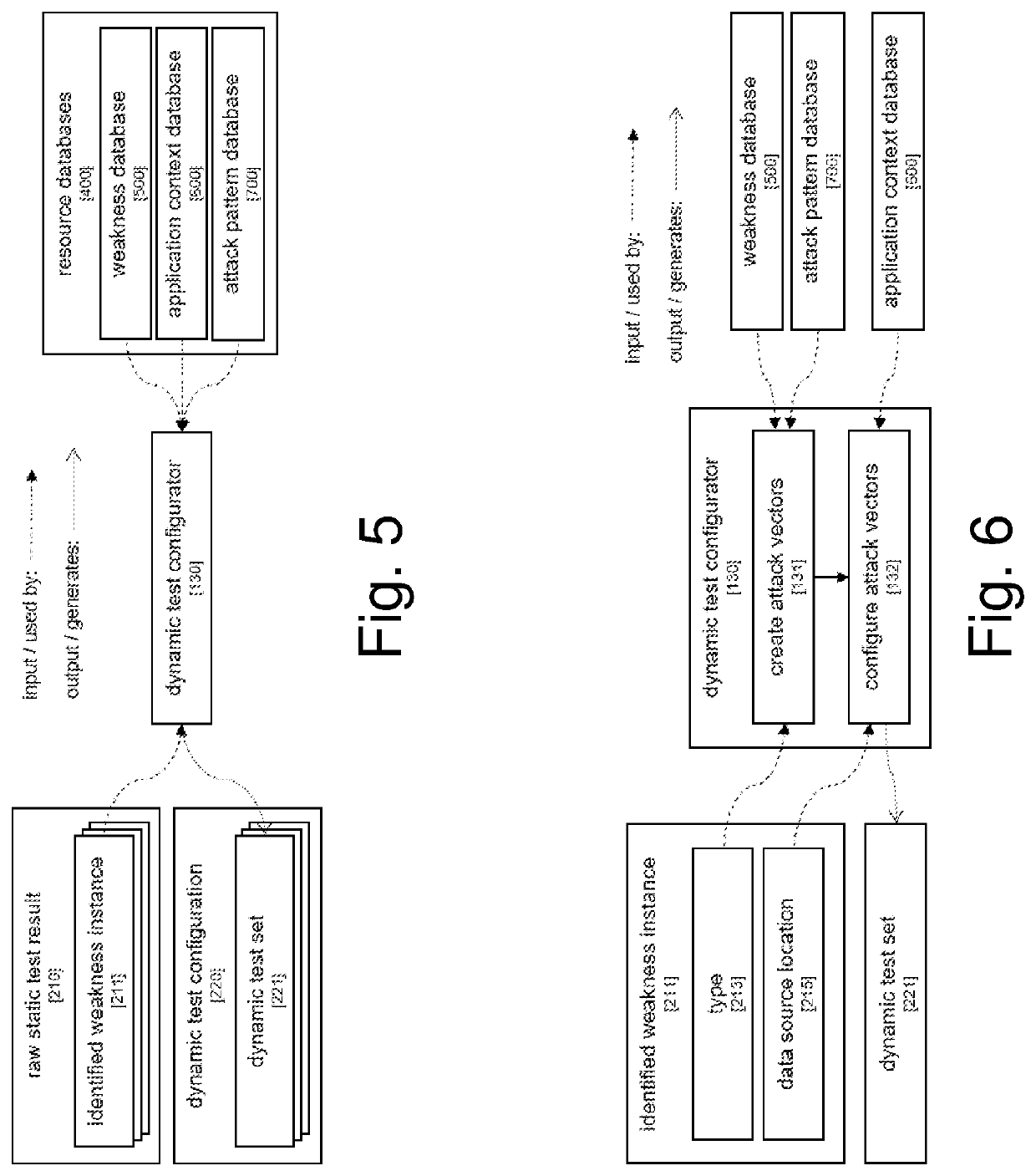Systems and/or methods for static-dynamic security testing using a test configurator to identify vulnerabilities and automatically repair defects
- Summary
- Abstract
- Description
- Claims
- Application Information
AI Technical Summary
Benefits of technology
Problems solved by technology
Method used
Image
Examples
example implementation
[0037]Details concerning an example implementation are provided below. It will be appreciated that this example implementation is provided to help demonstrate concepts of certain example embodiments, and aspects thereof are non-limiting in nature unless specifically claimed. For instance, certain example threat database, attack signature patterns (and attack signature pattern listings), interface types, database types, etc., are provided below to ease understanding of the example embodiments described herein and are not limiting unless explicitly claimed.
[0038]FIG. 3 is a block diagram showing components of an example static-dynamic test system according to certain example embodiments. A software application to be tested for security problems includes application code 300 that will typically contain some binaries 310, e.g. third-party libraries and compiled libraries of its own, as well as source code 320. This same software application also is deployed as a running application 810 ...
example static
Testing
[0055]For the static testing, common Static Application Security Testing (SAST) tools are used, as commercially available tools in that category provide information that is useful for the operations described herein. A variety of information may be included in the test results for each identified weakness. First, the CWE-ID may be included. A CWE-ID is a unique identifier that classifies a weakness type based on the CWE List. Second, the code / binary location where the weakness occurs may be included. This may be a reference to the exact location in the source code or binary, identified by filename and location in that file for example, where the defect that causes the weakness is located. Third, the code / binary location where the data that causes the weakness entered the application may be included. This may be a reference to the exact location in the source code or binary, identified by filename and location in that file for example, where the data that causes the weakness t...
example dynamic
Test Configurator
[0059]FIG. 5 is a block diagram showing further detail of how a dynamic test configurator 130 may work, in accordance with certain example embodiments. The dynamic test configurator 130 uses the output of the static test 120 (included in the raw static test results 210) and analyzes each identified weakness instance 211 to generate a dynamic test set 221 for each identified weakness instance 211. Multiple dynamic tests may be created in this regard. The dynamic test sets 221 are a part of the dynamic test configuration 220 to be executed by the dynamic test 140. A dynamic test set 221 in turn is used to evaluate whether an identified weakness instance 211 can be exploited in the running application 810. In certain example embodiments, for each identified weakness instance 211, there is a dynamic test set 221 created, which includes one or more dynamic test cases 222.
[0060]FIG. 6 is a block diagram demonstrating how attack vectors can be created and configured in acc...
PUM
 Login to View More
Login to View More Abstract
Description
Claims
Application Information
 Login to View More
Login to View More - R&D
- Intellectual Property
- Life Sciences
- Materials
- Tech Scout
- Unparalleled Data Quality
- Higher Quality Content
- 60% Fewer Hallucinations
Browse by: Latest US Patents, China's latest patents, Technical Efficacy Thesaurus, Application Domain, Technology Topic, Popular Technical Reports.
© 2025 PatSnap. All rights reserved.Legal|Privacy policy|Modern Slavery Act Transparency Statement|Sitemap|About US| Contact US: help@patsnap.com



